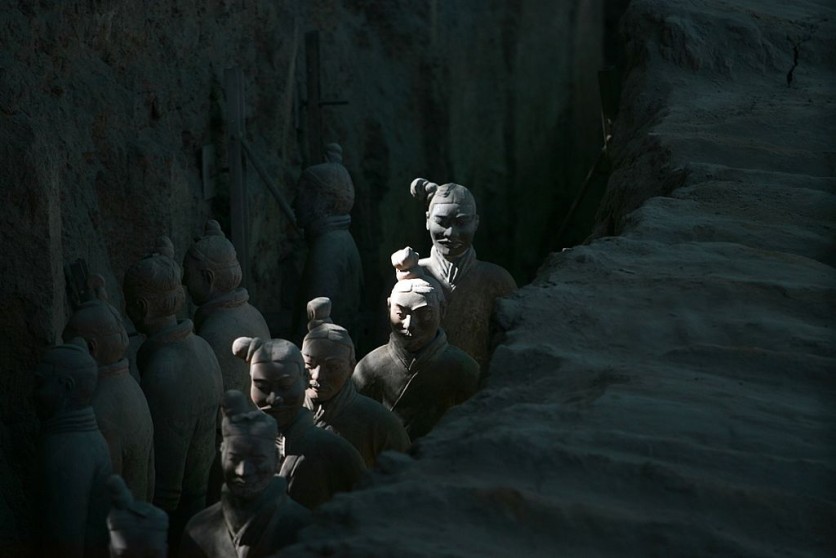Archaeologists in China have made a remarkable discovery near the mausoleum of the nation's first emperor, Qin Shi Huang. This significant find comprises a set of chariots, including a rare "six-sheep" carriage, shedding light on ancient burial customs.
According to SCMP, the positioning of the sheep, arranged in an organized manner, suggests their role in a burial ritual. While the main body of the chariot had suffered decay over time, traces of implements used for carriage transport were found on the sheep remains.
Jiang Wenxiao, leading the archaeological endeavor, expressed that this revelation is an "exceptionally rare" occurrence in the world of Chinese archaeology.

Six-Sheep Carriage Unearthed in China
In ancient China, chariots pulled by horses or oxen were commonplace, hence the frequent discoveries of their remains. Yet, historical records of sheep-drawn carriages are infrequent, making this physical evidence a notable breakthrough.
What sets this chariot apart is its age. It predates any previous mention of a six-sheep carriage in historical records. Before this discovery, the earliest reference to such a carriage was associated with Emperor Wu, the founder of the Jin dynasty.
He was noted to take evening tours of his palace complex in a sheep-drawn carriage, marking the inaugural mention of this type of carriage. Additionally, a separate, well-preserved wooden chariot with an intricate wooden umbrella was unearthed at the site. It stands as the oldest known chariot of its kind.
The vicinity surrounding the discovery boasts a wealth of horse and chariot remnants, hinting at their connection to burial customs during the Qin dynasty. Chariot types and the number of horses per vehicle vary across different locations, according to SCMP.
This discovery holds great promise as a priceless asset for scientists investigating ancient Chinese burial traditions. It is worth noting that the tomb in focus is not attributed to Emperor Qin Shi Huang, as ongoing analysis seeks to identify its original occupant.
Read Also : Archaeologists Say Indonesia's Ancient Structure Could Be World's Oldest Pyramid Built by Human Hands
Ancient Tomb Site
This latest find adds to a series of remarkable artifacts unearthed at this tomb site. In 2020, researchers unveiled an ancient silver camel figurine, marking the earliest known example of such an ornament in China.
This finding implies active trade connections between China and West Asia during the Qin dynasty. Qin Shi Huang, famed for uniting China and establishing the Qin dynasty, remains a pivotal figure in Chinese history. While strong indications associate the mausoleum with him, the precise location of his burial chambers continues to elude researchers.
In 2021, a project supported by government funding investigated the possibility of using cosmic rays to uncover Qin Shi Huang's final resting place. It involved detecting cosmic-origin objects that might be hidden in difficult-to-reach locations.
The mausoleum attributed to Qin Shi Huang is a colossal structure, dwarfing the Forbidden City by a factor of 70. It is recognized as the largest known tomb ever constructed for an individual in history.
Related Article : Archaeologists Unearth 3,500-Year-Old' Book of the Dead' in Ancient Egyptian Cemetery

ⓒ 2025 TECHTIMES.com All rights reserved. Do not reproduce without permission.




